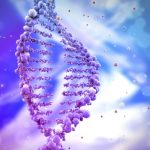In MS, the immune system attacks the protective myelin sheath that insulates nerve cells. Initially, the body is able to repair and regenerate this myelin (known as ‘remyelination’), but over time, the body’s ability to remyelinate becomes weakened. The exact causes of this remyelination failure are unclear, but much research has been dedicated to understanding the mechanisms of remyelination and looking for new ways to encourage myelin repair and regeneration to reverse the effects of MS.
As discussed in the article titled ‘Lessons from brain development may help repair myelin in MS’, researchers are investigating how to encourage myelin repair through stimulating stem cells in the brain. But this research needs to go hand in hand with research to understand what factors in the brain and spinal cord may inhibit myelin regrowth.
Published in the international medical journal Neuroscience, this recent study used post-mortem spinal cord tissue from 16 people who had MS, donated to the UK MS Tissue Bank at the Imperial College, London. This was compared to spinal cord tissue from 13 people who did not have MS or any other neurological disorder.
Using specialised molecular biology techniques, the researchers studied the levels of three specific molecules – cobalamin, epidermal growth factor (EGF), and cellular prions. These molecules are known to be involved in the process of myelin production, and all work together to regulate the environment around the nerve in order to promote and encourage the growth of functional myelin around each nerve cell.
The researchers set out to identify whether the levels of these molecules were different in the spinal cords of people who had MS, compared to the control group. They found that each of these three molecules was decreased in MS within the spinal cord tissue compared to the control group, and were also altered in the cerebrospinal fluid that surrounds the brain and spinal cord.
Because cobalamin, EGF, and cellular prions have been shown to play a role in the production of myelin, the researchers suggest that reduced levels of these molecules may be part of the road-block preventing myelin repair in MS. Further research will help to determine whether new treatments could be developed to target these molecules, to remove this road-block and allow new myelin to be produced and reverse MS-related damage.
Donated spinal cord and brain tissue is extremely versatile and supports a wide range of different types of research. Tissue may be used to study the structure and anatomy of the tissue itself and any lesions that are present, but also to study the molecules and chemicals within the tissue, even allowing researchers to study the DNA and genes that are switched on or off in the tissue.
The MS Research Australia Brain Bank collects brain and spinal cord tissue donations from people with MS who have passed away, allowing researchers to conduct vitally important work.
To register your interest in becoming a donor with the MS Research Australia Brain Bank, visit www.msbrainbank.org.au/register or call 1300 672 265.






